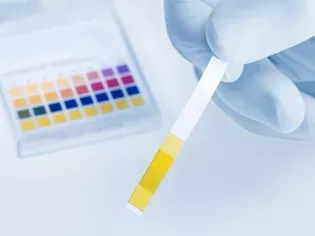Aquarium Water pH Maintenance
Updated on 04/26/24

Maintaining the Optimal Aquarium Water pH: A Comprehensive Guide to Understanding, Testing, and Adjusting
Maintaining the correct pH level in your aquarium is crucial for the health and well-being of your aquatic inhabitants. Optimal pH levels vary depending on the species of fish and plants in your tank, but generally fall within a narrow range. This guide will provide you with a comprehensive understanding of aquarium water pH, practical tips for testing and adjusting pH levels, and insights into the potential consequences of improper pH maintenance.
What is pH?
pH is a measure of the acidity or alkalinity of water. It is measured on a logarithmic scale from 0 to 14, with 7 indicating neutral, values below 7 indicating acidity, and values above 7 indicating alkalinity. The pH scale is logarithmic because each unit change represents a tenfold difference in acidity or alkalinity. For example, water with a pH of 6 is ten times more acidic than water with a pH of 7.
Why is pH Important in Aquariums?
pH levels directly impact many biological processes in fish. Here are a few ways in which pH affects aquatic life:
- Metabolic Processes: Enzymes involved in metabolism function optimally within a specific pH range. Extreme pH levels can disrupt enzyme activity, impairing fish health and metabolism.
- Respiratory Function: Gills, the primary respiratory organs in fish, are sensitive to pH changes. In acidic water, gill tissue can become damaged, reducing oxygen uptake and leading to respiratory distress.
- Reproduction: pH levels can affect fish reproduction by influencing the viability of eggs and sperm. Many fish species require a specific pH range for successful spawning and hatching.
- Stress Response: Abrupt pH fluctuations or prolonged exposure to extreme pH levels can trigger stress responses in fish. Chronic stress can weaken their immune systems and make them more susceptible to diseases.
How to Test Aquarium Water pH
Testing your aquarium water pH is a crucial step in maintaining optimal water quality. Several methods are available for pH testing:
- Test Strips: Test strips are a quick and easy way to estimate pH levels. Dip the strip into the water sample and compare the color change to the color chart provided on the strip container.
- Electronic pH Meters: Digital pH meters provide more accurate pH measurements than test strips. Calibrate the meter before use and insert it directly into the water sample for an instant reading.
- Chemical Reagents: Chemical reagents are used in titration methods to determine pH levels. This method involves adding a known amount of acid or base to the water sample until a color change occurs.
How to Adjust Aquarium Water pH
If your aquarium water pH is outside the optimal range, there are several methods you can use to adjust it:
- Water Changes: Gradual water changes with water that has the desired pH can help adjust the overall pH of the tank. However, this method should be used cautiously to avoid shocking the fish.
- Chemical Additives: Commercially available pH buffers and additives can be used to raise or lower pH levels. Follow the manufacturer's instructions carefully and monitor pH levels closely after adding any chemicals to the tank.
- Natural Materials: Certain natural materials, such as driftwood or peat moss, can slowly alter pH levels in aquariums. Driftwood typically lowers pH, while peat moss raises pH.
Consequences of Improper pH Maintenance
Maintaining the correct pH level in your aquarium is essential for the health and survival of your fish. Improper pH maintenance can lead to a variety of health problems and may result in:
- Slowed Growth and Development: Inappropriate pH levels can stunt the growth and development of fish, affecting their overall health and appearance.
- Increased Disease Susceptibility: Suboptimal pH levels weaken the immune system of fish, making them more vulnerable to diseases.
- Reproductive Issues: Extreme pH levels can impair reproduction, preventing successful spawning and hatching.
- Death: Prolonged exposure to extreme pH levels can be fatal to fish.
Conclusion
Maintaining optimal aquarium water pH is a crucial aspect of responsible fishkeeping. By understanding the importance of pH, testing it accurately, and making necessary adjustments, you can create a healthy and thriving environment for your aquatic pets. Remember to monitor pH levels regularly, especially after water changes or the addition of new materials to the tank. With proper care and attention, your fish will flourish in a well-balanced aquarium ecosystem.
Explore More Pets

Freshwater Aquarium Filters
How to Deal With Cloudy Aquarium Water

Saltwater Aquarium Filters
How Do You Remove Chloramines From Tap Water?

Freshwater Aquariums & Habitat
Can I Keep My Koi Fish Inside?

Saltwater Aquariums & Habitat
14 Best Floating Plants for Your Aquarium

Freshwater Fish Health
How to Treat Ich on Freshwater Fish

Saltwater Fish Health
Fin Rot in Aquarium Fish

Freshwater Aquarium Filters
How to Do Aquarium Water Changes

Saltwater Fish Health
How Do Fish Get Parasites?